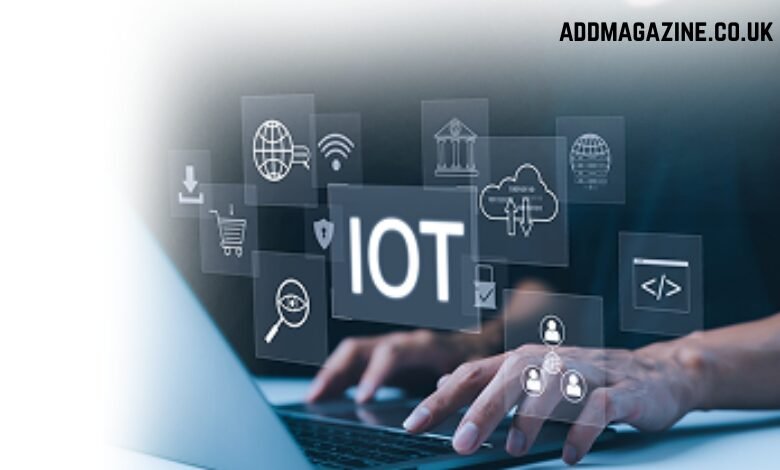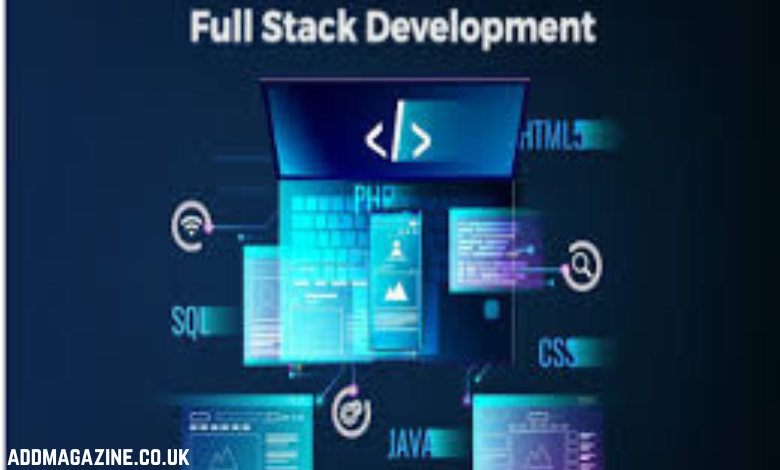The Internet of Things (IoT) is one of the most powerful forces in healthcare today, providing connections within a system that links children, parents, caregivers, and healthcare organizations through the use of intelligent sensors and smart devices. The pediatric healthcare sphere is particularly advanced because it depends on ongoing patient care, real-time monitoring, and customized health management for children. An IOT Development Company can join healthcare institutions in advancing the design and development of wearables or smart systems that are specific to the needs of children, can assess continuous vital signs, early symptoms, and respond to potential emergencies.
When thinking about IoT within pediatric health, it is beyond medical management; it is about safety, comfort, and engagement of the parents if they are nearby and comfortable. Children’s health requires careful monitoring at times, and through IoT, caregivers will be dynamically monitoring continuous vital signs, providing alerts for anomaly detection, and offering behavioral health outcomes through connected ecosystems. Examples of IoT many are aware of including smart baby monitors or wearable glucose sensors are just a glimpse into what can happen in the future with pediatric health.
Understanding IoT in Pediatric Healthcare
Pediatric healthcare IoT refers to the interconnected network of devices, wearables, sensors, and software that collect, share, and analyze children’s health information in real-time. The devices use a cloud system or mobile application to support decisions made between pediatricians and families.
Pediatric IoT systems are adapted to the physiology of children and their lifestyle, unlike global healthcare IoT. Devices are designed to be comfortable, wearable, intuitive, and non-invasive, which means children and young people can have their health data tracked without becoming overly distressed by the device.
Modern IoT tailored to pediatrics consists of:
- Smart wearables for wellness (i.e., wristbands, ankle bands, or patches).
- Home-based IoT stations connected to pediatric medical clinic
- Mobile and cloud shareable dashboards for parents and clinicians.
- Machine learning algorithms for alerts and predictions.
These interrelated systems enable expedient diagnosis, improved disease prevention, and better communications amongst child, caregiver, and healthcare provider.
The Role of Wearables and Smart Devices for Children
Wearable technology is essential to pediatric IoT ecosystems. These devices help healthcare become more routine and proactive, whether monitoring sustained vital signs such as heart rate and fever or specific conditions like blood glucose levels or respiratory function.
For example, smart wearable technology, including wristbands or adhesive patches, and some smart inhalers or glucose meters, are capable of transmitting biometric data to a smartphone or hospital biometrics system. These devices rely on pediatricians for remote monitoring of the child and provide opportunities to intervene before the severity of the symptoms changes or worsens. Other smart inhalers and glucose monitors utilize biometric data as a basis for an ongoing feedback loop that guides treatment plans and enhances medication adherence.
Wearable technology extends benefits to measuring behavioral and mental wellness. Sensors evaluate movement, sleep quality, or other activity data, alerting parents of changes related to stress or anxiety. In conclusion, these devices support the child’s overall development beyond physical health.
Key Benefits of IoT in Pediatric Healthcare
Continuous Health Monitoring
The Internet of Things (IoT) can support health monitoring 24/7, even beyond formal health care environments. For example, wearables that collect biometric data consistently, such as heart rate, oxygen levels, skin temperature, sleep patterns, and mobility patterns, provide longitudinal data on a child’s health.
Providers convert this real-time visibility into fewer visits to the hospital, improved preventive care, and immediate information-sharing with parents and physicians, should there be abnormal readings for things like heart rate and drops in oxygen level.
Identifying Health Issues Early
Because the IoT can collect and analyze data over time, it can help identify potential health issues early. For example, minor changes in a child’s glucose level can be significant if they happen consistently. AI systems based on IoT will correlate multiple parameters and automatically alert pediatricians of noteworthy readings that would be overlooked or only seen during routine checkups.
Remote Care and Telemedicine Integration
IoT enhances telemedicine by supplying precise and timely data for remote engagement. During a sick-child consultation, pediatricians may analyze live metrics obtained from cloud-enabled devices to evaluate a child’s state. This is especially useful for rural families who do not have immediate access to a hospital.
Healthcare IOT Solutions simplify this process by embedding wearables ecosystems into telehealth technologies, supporting data consistency and reliable communication channels across medical networks.
Increased Parental Engagement
Parents are a key element to the success of pediatric IoT systems. Wearables and mobile pieces of technology enable them to monitor their child’s state on a daily basis, compliance with medications, and recovery progress. Simple data dashboards with colors to alert action, and easy to read analytical data simplifies how a non-medic observes and acts upon their child’s state of being.
A culture of shared data enables collaborative decision making between parents and doctors, building trust and engagement in pediatric care.
Improved Child Safety and Comfort
IoT expands beyond care, adding an enhanced level of safety and comfort for families. Smartwatches and GPS-enabled trackers allow parents to find children and receive alerts if their child leaves a defined safe perimeter. Meanwhile, ensuring monitoring does not become a distraction or concerning for the child, designs are ergonomic and skin-friendly.
Real-World Applications and Use Cases
IoT Wearables for Children with Chronic Diseases
IoT-connected wearables are especially useful for children suffering from chronic health conditions such as diabetes, asthma, or congenital heart disease.
Asthma inhalers can provide sensors that measure the frequency of use and monitor environmental factors like air quality and humidity. The doctor may utilize this data to promote adherence to daily medication regimens, and support can be provided as needed.
Glucose monitors continuously assess blood sugar levels and a notification may go to parents and clinicians as part of the alarm events index protocol that seeks to prevent dangerous hypoglycemia or hyperglycemia.
Wearable GPS technology for location tracking and child safety
Smart trackers connected with GPS and geofencing allow parents to track a child’s location in real-time. When a child exits the designated area, alerts can be sent to parents, such as when a child lapses school grounds or during free play at the park.
This makes parents feel comfortable during shared transit and outdoor activities, while their children remain physically safe.
Integrated pediatric hospital systems using IoT for personalized treatment
Pediatric hospitals and clinics are adopting the IoT-integrated platforms. The wearable technology feeds data to electronic health records (EHRs), while pediatricians visualize and use the continuous data stream to personalize the treatment plan and predict recovery expectations.
IoT analytics tools can analyze vital trends that can then suggest interventions based on a child’s growth patterns, medical diagnosis, and environment to support precision healthcare approaches.
Data Security and Privacy Concerns
Since health information related to children is particularly sensitive, pediatric IoT solutions must include additional layers of security. A breach could expose not just medical data but also location and behavior data.
To do this, IoT systems in healthcare would need to encrypt their data, de-identify sensitive identifiers, and satisfy data protection legislation such as HIPAA and GDPR. Data integrity can be further bolstered by maintaining secure authentication for any devices interacting with the data, regulating access for users, as well as registering the data on a blockchain ledger.
In addition, parents would benefit from the data privacy settings of mobile applications and devices with transparent data sharing policies that can help minimize the risk of exposing their child’s personal health information and data.
Challenges in Implementing IoT for Children’s Health
Device Affordability and Accessibility Issues
Although IoT continues to grow, the high cost of healthcare devices continues to serve as a blocker to acceptance among low-income families or families living in developing regions. To advance accessibility, devices must be manufactured at a lower cost, support for families from the government, and the collaboration of hospital networks with technology companies.
Accuracy and Reliability of Sensors Specific to Pediatric Populations
Most IoT devices are calibrated for adult patients. Instruments made for children must be sensitive to minute variations in physiology and highly balanced for precision. The manufacturers must continually prove that precision obtained in testing, would be sustained for children of different age ranges, size, and level of activity.
Integration Challenges Between IoT Devices and Hospital Systems
Hospital systems that would integrate a variety of IoT systems are complex and have unique interoperability issues when utilizing data sets supported by various data formats, APIs, and/or cloud systems. Finding a viable way to develop interoperability will be a key determining factor of how we define an interoperability framework, that would ensure independence and frictionless transfer of all communication among healthcare devices respective to the central databases.
Parents Need Awareness and Training
The success of any IoT system primarily relies on parents knowing about the device, its utility, how to interpret health readings, and privacy preferences. Providers and schools can organize structured awareness or training sessions to manage parents’ confidence with the digital literacy of support devices, thereby potentially elevating engagement with families.
Final Thoughts
The Internet of Things (IoT) is changing the landscape of pediatric healthcare by developing a once passive medical monitoring experience into an active, data powered experience that supports preventive health, safety, and timely access to health interventions. That’s everything from wearables, collecting subtle physiological parameters, to real-time dashboards for parents and doctors in the hands of our stakeholder ecosystem to support decision-making, timely medical response and fast action.
As IoT develops, partnerships in pediatric health will become the cornerstone of most health care settings. Partnerships amongst hospitals, research organizations, and IoT startups will provide the basis for building scalable, affordable, and sustainable health ecosystems for pediatric care. Investments in innovative connection frameworks and advanced analytics will facilitate a model of child-centered cross-collaboration — delivering meaningful health insights for children on a daily basis.
For healthcare providers and technology companies, this trend is not just innovative, it’s an imperative as they will need to establish IoT systems within an integrated Software Development Services to secure, optimize and expand the opportunities within a pediatric care context.




